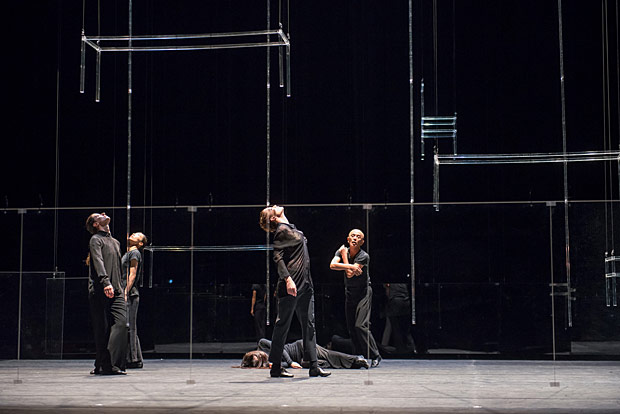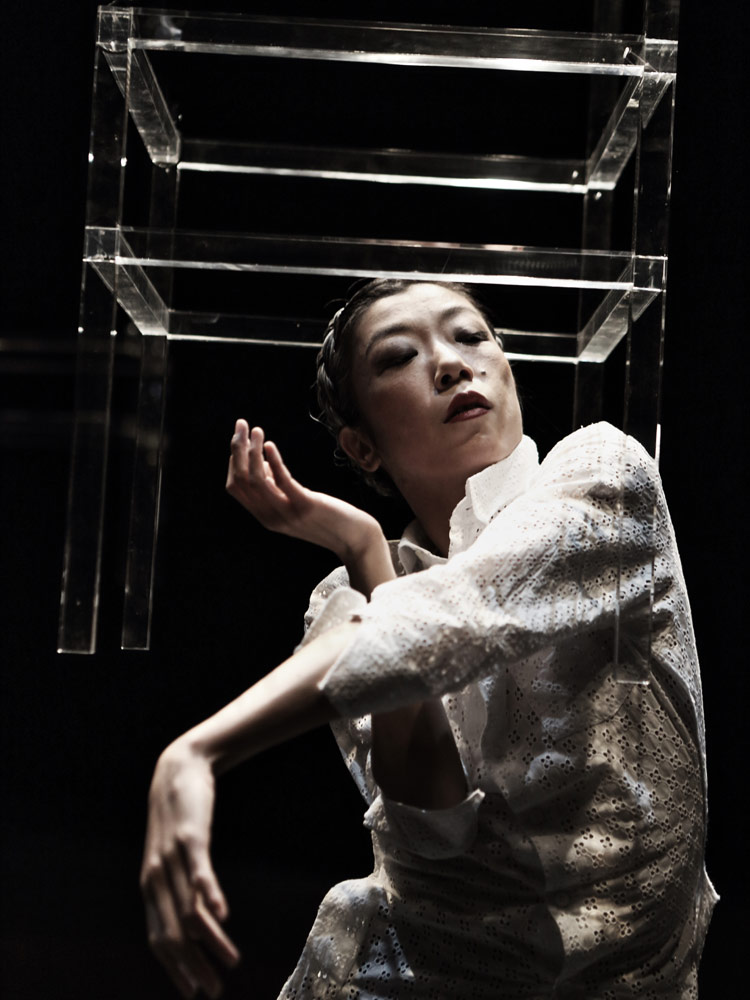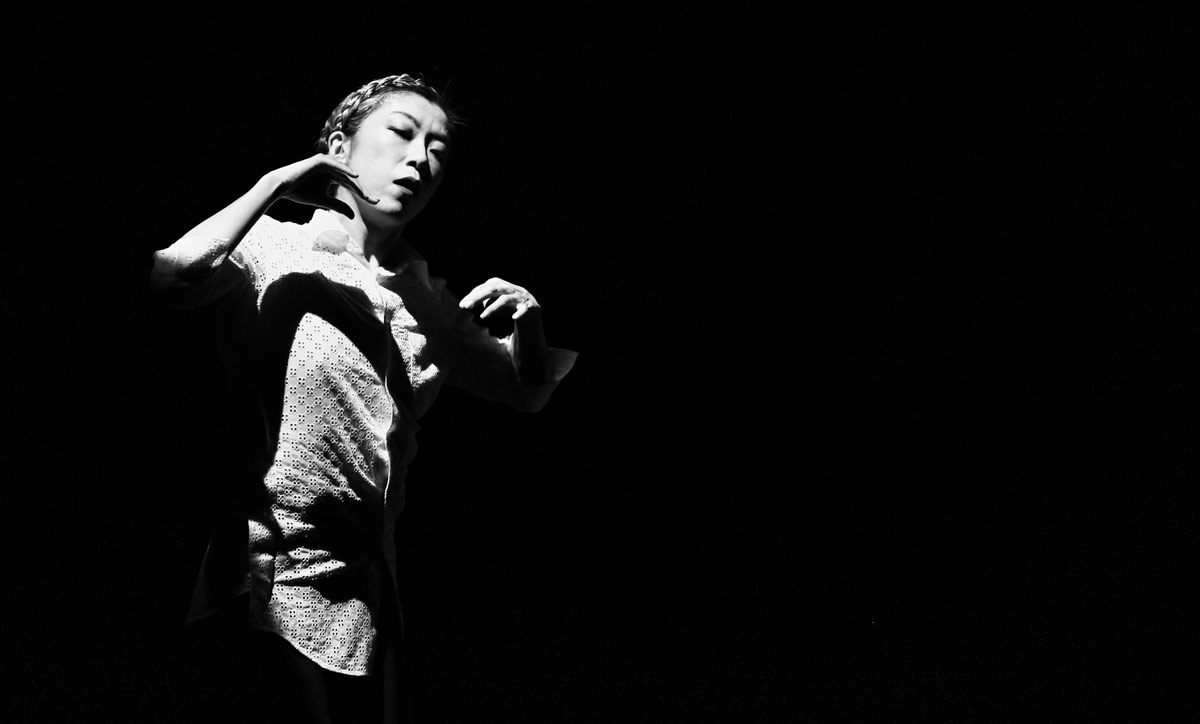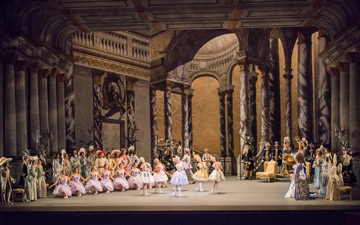
© Stephanie Berger. (Click image for larger version)
Saburo Teshigawara / KARAS
Sleeping Water
★★✰✰✰
New York, Rose Theater at Lincoln Center
15 July, 2017
www.st-karas.com
www.lincolncenter.org
Darkness and Light
There are dances that one figures out in the first five minutes. Hope as one might that the piece will evolve or turn a corner, it soldiers on in the same vein, section after section, until the end. In some cases a kind of incantatory effect settles in; more often, tedium. Such a dance is Saburo Teshigawara’s Sleeping Water, being performed this week as part of the Lincoln Center Festival.
Teshigawara, born in Japan, has developed an impressive movement style. The body is like a ribbon of movement whirling and slicing through space. The arms whip and lash the air; they seem to almost propel the body. The feet skitter and glide, bearing little weight. The torso folds and twists, opens and closes. Almost everything of interest happens above the waist. Teshigawara has said that his movement is driven by breath. What we see are bodies moving with remarkable speed and clarity, or, conversely with aching slowness and control. Every ripple and flutter is visible.

© Jean Michel Blasco. (Click image for larger version)
Sleeping Water is Teshigawara’s exploration of our consciousness as we sleep, wake, and hover in the netherworld in between. The dance takes place in a shadowy, aqueous world in which faces are often draped in darkness. (Designs are by Teshigawara.) Periodically, translucent panels and furnishings – a chair, a table – descend from the flies, only to disappear again. The dancers wear black, except at the very end, when Rihoko Sato, the most expressive and virtuosic of Teshigawara’s dancers, performs a long, slow folding solo, dressed in white. (The solo is set to Arvo Pärt’s Fur Alina, a piece that has proven irresistible to contemporary choreographers.) Black and white, light and shadow, fast and slow. You get the picture.
An earlier solo for Sato, set to the sarabande from the second violin partita by Bach – the same partita chosen by Twyla Tharp and Anne Teresa de Keersmaeker – becomes the apex of the work. The movement is almost blindingly fast, lithe, dynamic, fluid. Sato shows us the pauses and accents in the music; she becomes an abstract expression of the violin’s sound. Her entire body bends and folds and expands into space, all at once. It’s a remarkable solo.

© Stephanie Berger. (Click image for larger version)
The problem is that the vocabulary in Sleeping Water never really changes much. These same phrases are sped up, slowed down, performed by two or three dancers at once, or shared by the entire cast of seven. Fast passages are followed by slow ones; or, for some variety, fast and slow solos are danced simultaneously. Teshigawara, now in his sixties, hovers over the proceedings, executing a series of serpentine solos with exquisite control, slightly fluttering a finger or undulating a shoulder. He also dances a thrashing duet with Sato set to, of all things, the Rolling Stones’ “Paint it Black.” It’s almost funny.
The cast consists of five members of Teshigawara’s company, KARAS, with one guest, Aurélie Dupont. Dupont is a former étoile of the Paris Opéra Ballet, and since last year, the troupe’s artistic director. (The company will be performing in a mixed-company presentation of Jewels at the festival next week.) Dupont is admirably integrated in the group. She doesn’t move like a ballerina or hold herself like one at all. She doesn’t act like a star. She wears Teshigawara’s vocabulary well, without strain. Her balletic precision and sharpness, and her focus, serve her well here.

© Jean Michel Blasco. (Click image for larger version)
Despite lasting only 70 minutes, though, Sleeping Water drags. Visually, it holds few surprises. The structure is predictable. It also fails to convey the imaginative power of dreams, the death-like torpor of sleep, the anguish of waking up in the middle of the night and forgetting where you are. Our dreams have more variety than Teshigawara shows us here.

















You must be logged in to post a comment.